Picture yourself on a warm summer afternoon, sipping a cool, refreshing drink that bursts with the vibrant flavors of fresh herbs and flowers. That’s the magic of a homemade herbal cordial! As an herbalist who has spent over a decade perfecting various herbal cordial recipes, I’m excited to share my knowledge and help you create these delightful elixirs in your own kitchen.
Herbal cordials are concentrated syrups that capture the essence of herbs, flowers, and fruits, creating versatile concoctions that can transform ordinary drinks into extraordinary experiences. Whether you’re looking for an easy herbal cordial recipe to get started or seeking the best herbal cordial recipe for a specific herb, this comprehensive guide has everything you need to become a cordial-crafting expert.
What is Herbal Cordial? (Detailed Explanation)
Herbal cordials have a rich history dating back centuries across various cultures. Traditionally, these sweet, fragrant elixirs were created as a way to preserve the beneficial properties and flavors of seasonal herbs and fruits. The term “cordial” comes from the Latin word “cor” meaning heart, as these drinks were originally thought to stimulate and strengthen the heart.
In the Middle Ages, cordials were primarily medicinal preparations used by apothecaries and monasteries. By the Renaissance period, they had evolved into popular refreshments enjoyed by nobility. Today, they’ve experienced a resurgence as people seek natural, homemade alternatives to commercial drinks.
Distinguishing Between Cordials, Liqueurs, and Syrups
While the terms are sometimes used interchangeably, there are subtle differences:
- Cordials traditionally contain alcohol as a preservative and extraction medium, though modern non-alcoholic versions are increasingly popular. They’re typically sweeter and more concentrated than liqueurs, meant to be diluted before drinking.
- Liqueurs are always alcoholic and are designed to be sipped straight as a digestif or used in cocktails. They often have a lower sugar content than cordials.
- Syrups are alcohol-free concentrated sweeteners, usually made by dissolving sugar in water along with flavorings. They’re similar to non-alcoholic cordials but often simpler in composition.
In the UK and Australia, “cordial” typically refers to a non-alcoholic concentrate, while in the US, the term more commonly describes an alcoholic beverage. For our purposes, I’ll provide both alcoholic and non-alcoholic versions of each recipe.
Benefits of Making Herbal Cordials
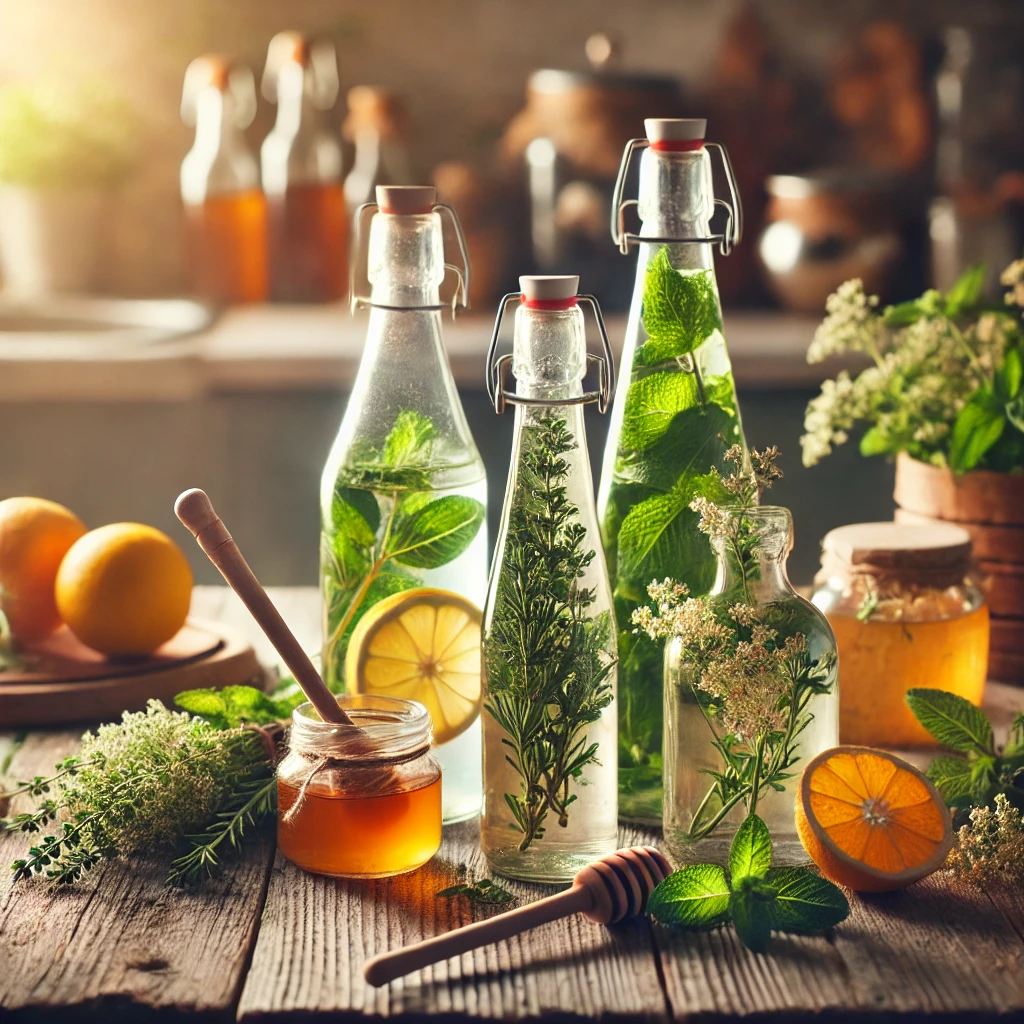
Health Benefits of Common Cordial Herbs
Many herbs traditionally used in cordials offer therapeutic properties:
- Elderflower contains flavonoids that support immune function and may help reduce the duration of cold and flu symptoms
- Lemon balm has calming properties that can reduce anxiety and improve sleep quality
- Rose is rich in antioxidants and may help reduce inflammation
- Hawthorn has been traditionally used to support heart health and circulation
- Ginger aids digestion and has anti-inflammatory properties
- Mint can soothe digestive discomfort and provides cooling relief
Advantages of Homemade vs. Store-Bought
Making your own herbal cordial recipes at home offers numerous benefits:
- Control over ingredients: Avoid preservatives, artificial flavors, and excess sugar
- Customization: Adjust sweetness, strength, and herb combinations to your preference
- Cost-effectiveness: Save money, especially when using garden-grown herbs
- Freshness: Capture seasonal herbs at their peak
- Sustainability: Reduce packaging waste and carbon footprint
- Connection to tradition: Participate in the age-old practice of herbal preservation
Supporting Specific Health Goals
While cordials shouldn’t replace medical treatment, they can complement a holistic approach to wellness:
- Digestive support: Cordials featuring ginger, fennel, or mint can be sipped before or after meals
- Immune boosting: Elderberry, echinacea, or thyme cordials during cold and flu season
- Stress relief: Lemon balm, lavender, or holy basil cordials as part of a relaxation ritual
- Energy enhancement: Rosemary, nettle, or lemongrass cordials as a refreshing alternative to caffeine
Ingredients & Equipment Needed
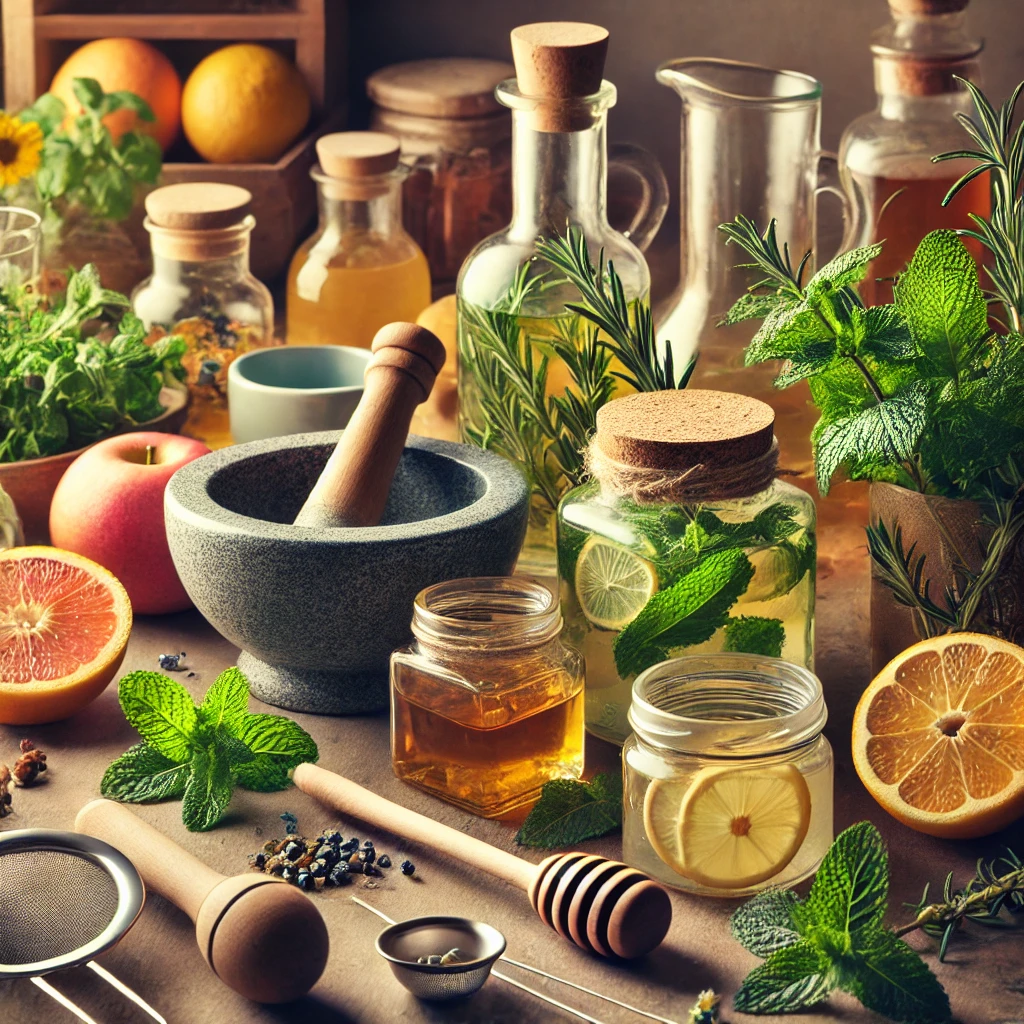
Essential Ingredients
Herbs and Flowers For the best results, source high-quality ingredients:
- Fresh herbs: Ideal when in season, providing vibrant flavor
- Dried herbs: More concentrated, available year-round (use approximately 1/3 the amount of fresh)
- Organic options: Particularly important for herbs like elderflower where all parts are used
- Foraging: If gathering wild herbs, ensure proper identification and avoid areas with pesticides or pollutants
Sweeteners
- White sugar: Creates the clearest cordials
- Raw honey: Adds complexity and additional health benefits (note: not suitable for true boiling methods)
- Coconut sugar: Provides a lower glycemic alternative with caramel notes
- Maple syrup: Offers a distinct flavor that pairs well with certain herbs
Alcohol (for traditional cordials)
- Vodka: Neutral flavor that allows herbs to shine
- Brandy: Adds warmth and complexity
- Gin: Botanical notes that complement herbal flavors
- Grain alcohol (Everclear): Higher proof for maximum extraction and preservation
Acids (for balancing flavor)
- Lemon juice: Brightens flavor and helps preservation
- Citric acid: Provides consistent acidity and extends shelf life
- Apple cider vinegar: Offers probiotic benefits and can replace alcohol in some recipes
Required Equipment
Essential Tools
- Glass jars: Mason jars work perfectly for infusing (avoid metal or plastic)
- Fine-mesh strainer: For removing herb particles
- Cheesecloth or nut milk bag: For additional filtering
- Funnel: For transferring liquid without spillage
- Measuring cups and spoons: For accurate recipes
- Glass bottles: For storing finished cordials
- Labels: To mark contents and creation date
Optional but Helpful
- Candy thermometer: For precise sugar syrup temperatures
- pH strips: To test acidity for proper preservation
- Bottle caps or corks: For sealing homemade cordials
- Decorative bottles: For gift-giving
Ingredient Substitutions
- Sugar alternatives: For diabetic-friendly options, consider stevia, erythritol, or monk fruit (requires recipe adjustments)
- Alcohol-free options: Apple cider vinegar, glycerin, or strong tea can replace alcohol as preservation methods
- Herb substitutions: Learn which herbs share similar flavor profiles for substitutions when specific herbs aren’t available
Base Herbal Cordial Recipe (The Foundation)
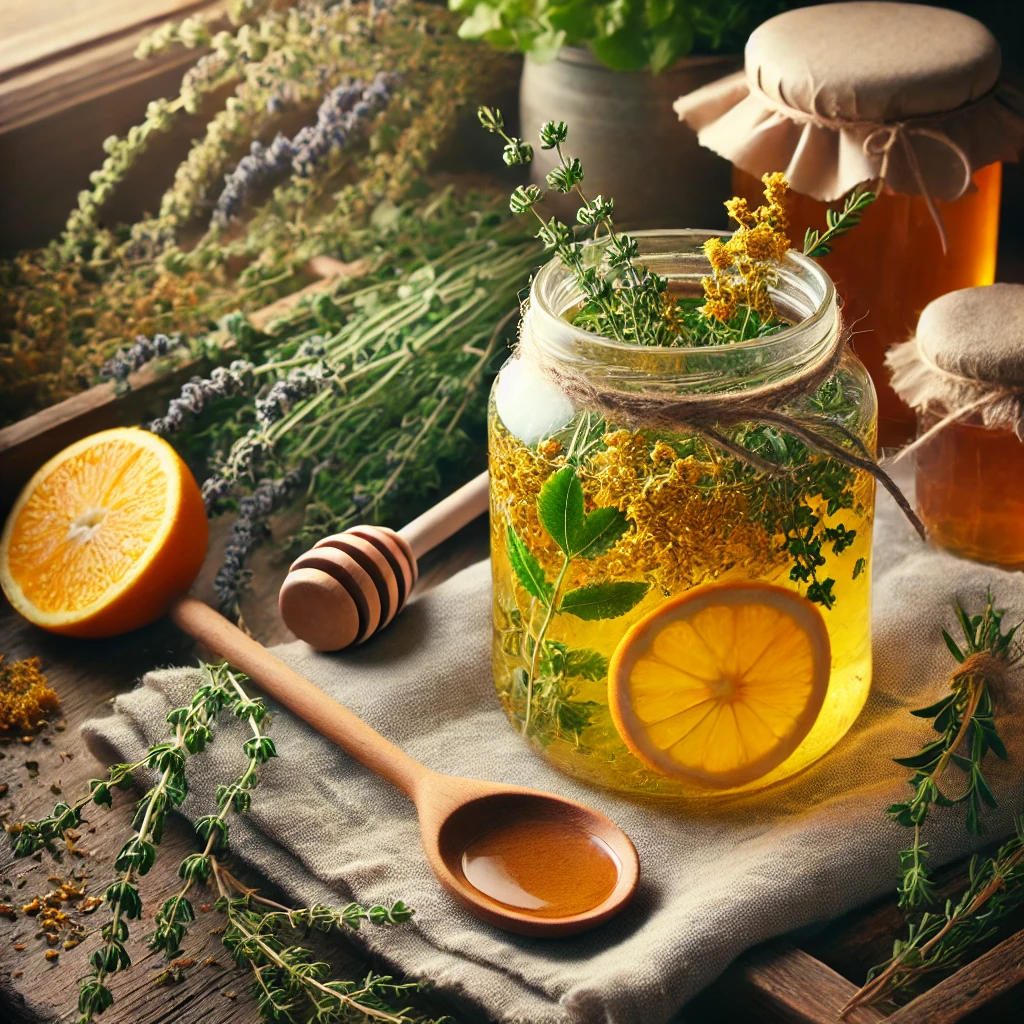
This versatile recipe forms the foundation for countless variations. Master this method, and you’ll be prepared to create any herbal cordial that catches your fancy.
Basic Alcoholic Herbal Cordial Recipe
Ingredients:
- 2 cups fresh herbs or flowers (or 2/3 cup dried)
- 2 cups vodka or brandy (80-100 proof)
- 1-2 cups sugar (adjust to taste)
- 1 cup filtered water
- 1 tablespoon lemon juice or 1/4 teaspoon citric acid
Instructions:
- Prepare the herbs: Gently rinse fresh herbs and pat dry. Remove any damaged parts. For flowers like elderflower, gently shake to remove insects but don’t wash (this preserves the natural yeasts that contribute to flavor).
- Infuse the alcohol: Place herbs in a clean glass jar and cover completely with alcohol. Seal tightly and store in a cool, dark place. Shake daily for 2-4 weeks. The alcohol extracts both flavor compounds and medicinal properties from the herbs.
- Strain the infusion: Using a fine-mesh strainer lined with cheesecloth, strain the liquid into a clean container. Press gently on the herbs to extract all liquid. For an extra-clear cordial, strain a second time.
- Create a simple syrup: Combine sugar and water in a saucepan. Heat gently while stirring until sugar completely dissolves. Let cool to room temperature.
- Combine and balance: Mix the herbal infusion with the simple syrup. Add lemon juice or citric acid to brighten the flavor. Stir well.
- Bottle and age: Transfer to sterilized bottles using a funnel. Label with contents and date. Store in a cool, dark place. Many cordials improve with age, developing more complex flavors over 1-3 months.
- Enjoy: Dilute with still or sparkling water to taste, or use in cocktails. Standard ratio is 1 part cordial to 4-6 parts water, but adjust to your preference.
Non-Alcoholic Herbal Cordial Recipe
Ingredients:
- 2 cups fresh herbs or flowers (or 2/3 cup dried)
- 2 cups sugar
- 2 cups water
- 2 tablespoons lemon juice or 1/2 teaspoon citric acid
- Optional: 2 tablespoons apple cider vinegar (for preservation)
Instructions:
- Prepare herbs: Clean as described above.
- Make infused syrup: Bring water to a simmer in a saucepan. Remove from heat, add herbs, and cover. Let steep for 30 minutes to 4 hours, depending on the herb’s delicacy. Flowers require less time than woody herbs.
- Strain the infusion: Using a fine-mesh strainer lined with cheesecloth, strain the liquid back into the saucepan, pressing gently on herbs.
- Add sugar: Add sugar to the hot infusion and heat gently, stirring until completely dissolved. Don’t boil vigorously as this can damage delicate flavors.
- Add acid: Mix in lemon juice or citric acid (and apple cider vinegar if using for extended preservation).
- Bottle while hot: Pour into sterilized bottles and seal immediately. The heat helps create a vacuum seal for better preservation.
- Store properly: Non-alcoholic cordials should be refrigerated after opening and used within 1-2 months. For longer storage, process bottles in a water bath canner for 10 minutes.
Recipe Variations (Specific Herbal Cordials)
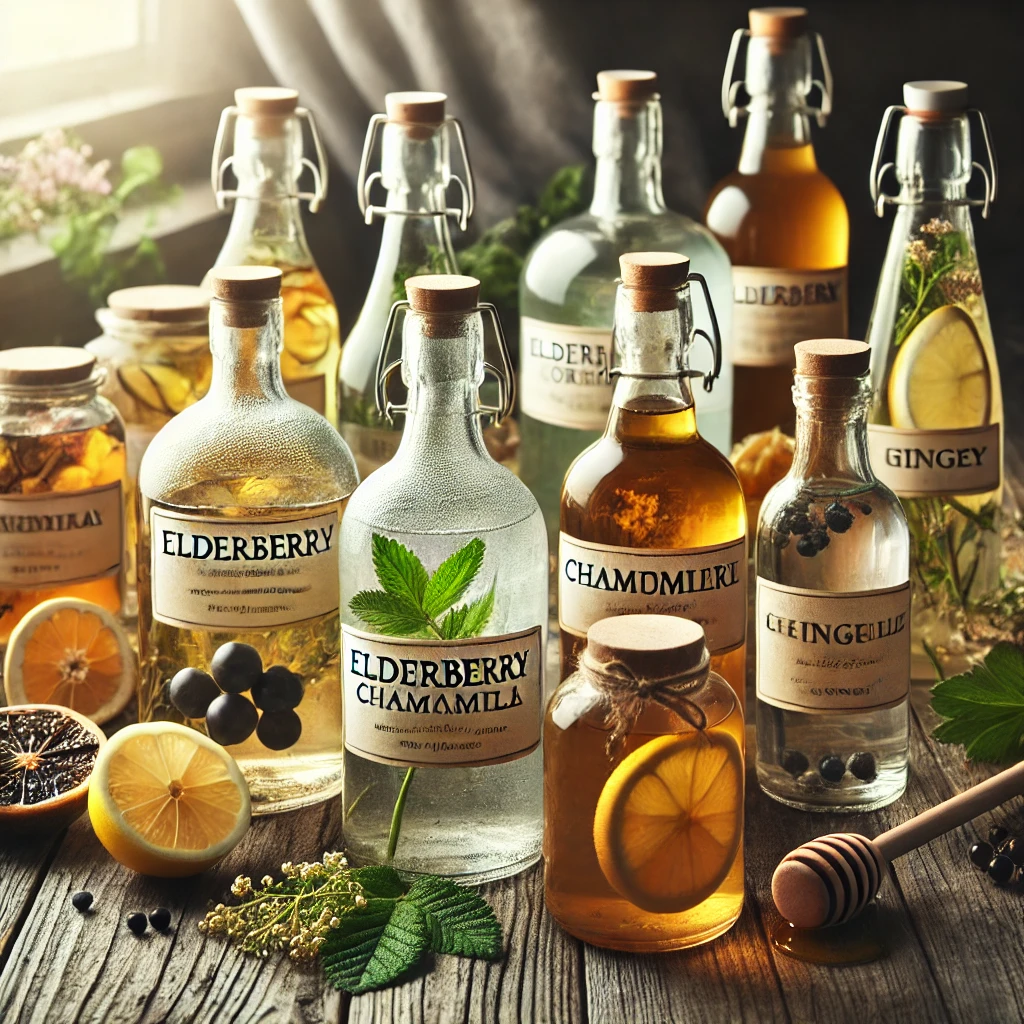
Elderflower Cordial Recipe
Elderflower cordial captures the essence of early summer with its delicate, floral flavor and subtle notes of muscat grape and honey.
Ingredients:
- 25-30 fresh elderflower heads
- 4 cups sugar
- 2 cups water
- 2 unwaxed lemons, zested and sliced
- 2 tablespoons lemon juice
- Optional: 1 tablespoon citric acid (for preservation)
Instructions:
- Inspect elderflowers carefully, removing any insects or damaged parts. Don’t wash them, as this removes the natural yeasts that contribute to the distinctive flavor.
- Place flowers in a large glass bowl or jar with the lemon zest and slices.
- Heat water and sugar in a saucepan until sugar dissolves completely. Let cool for 10 minutes.
- Pour the warm syrup over the flowers and lemons. Add lemon juice and citric acid if using.
- Cover with a clean cloth and let infuse for 24-48 hours in a cool place, stirring once daily.
- Strain through a fine-mesh strainer lined with cheesecloth into a clean container.
- Pour into sterilized bottles and store in the refrigerator for up to 1 month, or freeze in ice cube trays for up to 1 year.
Lemon Balm Cordial Recipe
This calming cordial showcases lemon balm’s gentle citrus notes and relaxing properties, making it perfect for evening sipping.
Ingredients:
- 2 cups fresh lemon balm leaves, lightly packed
- 2 cups vodka (for alcoholic version) OR 2 cups water (for non-alcoholic)
- 1½ cups sugar
- 1 lemon, zested and juiced
- Optional: 1 tablespoon honey for added complexity
Instructions for Alcoholic Version:
- Bruise lemon balm leaves gently to release essential oils, then place in a jar with vodka.
- Seal and store in a dark place for 2 weeks, shaking every few days.
- Strain through cheesecloth, squeezing to extract all liquid.
- Make simple syrup by dissolving sugar in 1 cup water, then cooling.
- Combine herbal infusion with syrup, lemon zest, and juice.
- Bottle and age for at least 2 weeks before using.
Serving suggestion: Add 1 oz to hot water for a soothing evening tea, or mix with sparkling water and a sprig of fresh mint for a refreshing mocktail.
Rose Cordial Recipe
This exquisite cordial captures the romantic essence of roses, creating a fragrant elixir that’s both delicious and visually stunning.
Ingredients:
- 2 cups fresh, organic rose petals (ensure they haven’t been treated with chemicals)
- 2 cups sugar
- 2 cups water
- 1 tablespoon lemon juice
- Optional: 1 tablespoon rosewater to intensify flavor
Instructions:
- Gently rinse rose petals and remove white bases (which can impart bitterness).
- Bring water to a simmer, remove from heat, and add rose petals.
- Cover and steep for 2 hours until water takes on the color and scent of the roses.
- Strain through cheesecloth into a saucepan, pressing gently on petals.
- Add sugar and heat gently until dissolved.
- Add lemon juice and rosewater if using.
- Bottle in sterilized containers while hot.
Serving suggestion: Add to champagne for a romantic toast, or use as a flavoring for homemade ice cream or delicate pastries.
Hawthorn Cordial Recipe
This heart-supporting cordial features the tangy-sweet flavor of hawthorn berries, traditionally used to promote cardiovascular health.
Ingredients:
- 2 cups fresh hawthorn berries (or 1 cup dried)
- 1 cinnamon stick
- 3 cardamom pods, crushed
- 2 cups brandy (for alcoholic version) OR 2 cups water (for non-alcoholic)
- 1½ cups sugar
- 1 tablespoon apple cider vinegar
Instructions for Alcoholic Version:
- Slightly crush fresh hawthorn berries to break the skins.
- Combine berries, cinnamon, and cardamom in a jar and cover with brandy.
- Seal and infuse for 4 weeks in a dark place, shaking occasionally.
- Strain through cheesecloth, pressing firmly to extract all liquid.
- Make simple syrup with sugar and 1 cup water, then cool.
- Combine infusion with syrup and apple cider vinegar.
- Bottle and age for at least 1 month for best flavor.
Serving suggestion: Take 1 teaspoon daily as a heart-supporting tonic, or dilute 1 oz with hot water for a warming winter beverage.
Ginger Cordial Recipe
This zingy, warming cordial aids digestion and provides a spicy kick to beverages.
Ingredients:
- 1 cup fresh ginger, thinly sliced (no need to peel if organic)
- 2 cups sugar
- 2 cups water
- Zest and juice of 1 lemon
- Pinch of cayenne pepper (optional, for extra heat)
Instructions:
- Combine ginger, water, and lemon zest in a saucepan.
- Bring to a simmer, then cover and cook on low heat for 30 minutes.
- Remove from heat and let steep for 1 hour.
- Strain through cheesecloth into a clean saucepan.
- Add sugar and lemon juice, heat gently until sugar dissolves.
- Add cayenne if using.
- Bottle while hot in sterilized containers.
Serving suggestion: Mix with hot water and a slice of lemon for a remedy to soothe colds, or add to sparkling water with fresh mint for a refreshing digestif.
Mint Cordial Recipe
This refreshing cordial captures the cooling essence of mint, perfect for summer beverages.
Ingredients:
- 2 cups fresh mint leaves (peppermint, spearmint, or a combination)
- 2 cups sugar
- 2 cups water
- Juice of 1 lime
- Optional: 1 tablespoon vodka as preservative for non-alcoholic version
Instructions:
- Bruise mint leaves gently to release essential oils.
- Bring water to a boil, remove from heat, and add mint leaves.
- Cover and steep for 1 hour.
- Strain through cheesecloth into a saucepan, pressing gently on leaves.
- Add sugar and heat gently until dissolved.
- Add lime juice and optional vodka.
- Bottle in sterilized containers.
Serving suggestion: Add to iced tea for a double mint experience, use in mojitos, or drizzle over fruit salad or chocolate desserts.
Troubleshooting & Tips
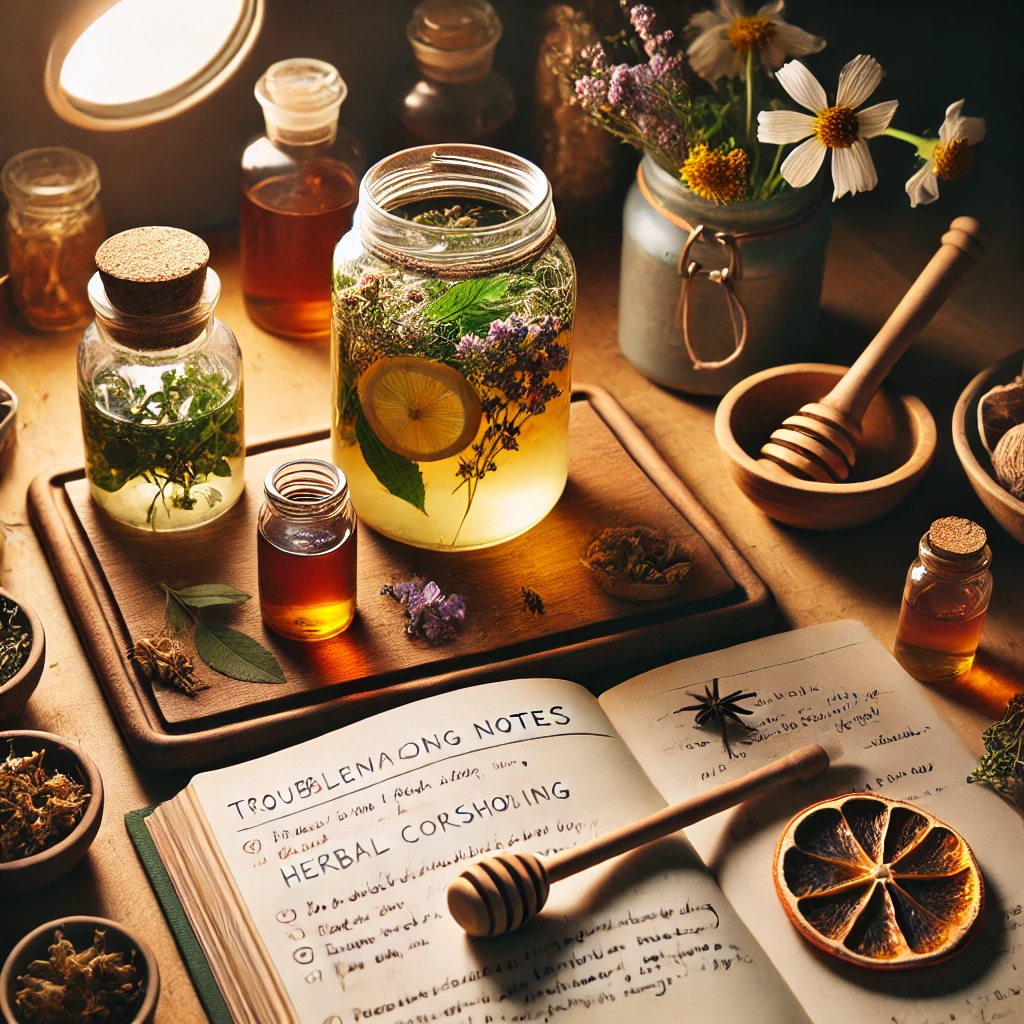
Common Problems and Solutions
Cloudy Cordial
- Cause: Insufficient straining or pectin in fruits
- Solution: Re-strain through coffee filter or add commercial pectin enzyme
Fermentation (Bubbling)
- Cause: Insufficient sugar or alcohol for preservation
- Solution: Refrigerate immediately and use quickly, or add more alcohol
Too Sweet
- Cause: High sugar-to-herb ratio
- Solution: Dilute with more herb infusion or add lemon juice to balance
Too Weak
- Cause: Insufficient steeping time or herb quantity
- Solution: Add more herbs and re-infuse, or reduce with gentle heat
Mold Growth
- Cause: Insufficient alcohol, sugar, or acid for preservation
- Solution: Discard (don’t risk it!) and ensure proper preservation in future batches
Pro Tips for Perfect Cordials
- Quality matters: Use the freshest herbs and flowers picked at their peak
- Timing is everything: Harvest herbs in morning after dew has dried but before heat of day
- Clean thoroughly: Sterilize all equipment to prevent spoilage
- Layer flavors: Consider adding complementary herbs (e.g., mint with lemon verbena)
- Age appropriately: Some cordials improve with time, while others are best fresh
- Label meticulously: Record ingredients, dates, and ratios for replication
- Consider hybrid methods: Combine alcohol extraction with hot process for complex flavors
Storage and Preservation
- Alcoholic cordials: Store in cool, dark place; most will keep for 1-2 years
- Non-alcoholic cordials: Refrigerate after opening; use within 1-2 months
- Freezing: Pour into ice cube trays for easy portioning and extended storage
- Canning: Process in water bath for 10 minutes for shelf-stable non-alcoholic cordials
- Signs of spoilage: Discard if you see mold, cloudiness, off smells, or fermentation bubbles
Serving Suggestions & Uses
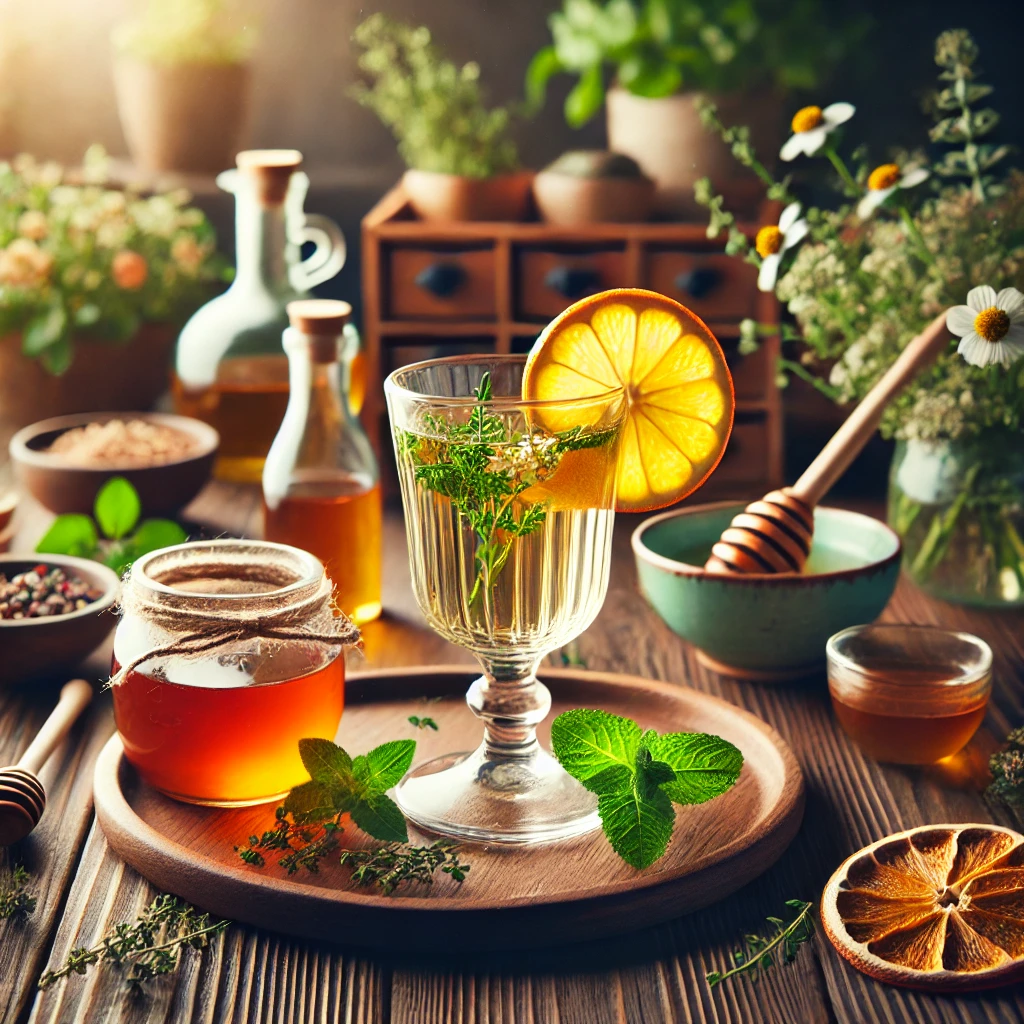
Beverages
- Simple cordial drink: Mix 1 part cordial with 4-6 parts still or sparkling water
- Cocktails: Add 1/2 oz to gin, vodka, or whiskey-based drinks
- Hot drinks: Stir into tea or hot water for winter warmers
- Coffee enhancement: Add a splash to cold brew or iced coffee
- Festive punch: Use as a flavoring base for large-batch punch
Culinary Applications
- Dessert sauces: Drizzle over ice cream, pancakes, or pound cake
- Salad dressings: Whisk with olive oil and vinegar for herb-infused vinaigrette
- Marinades: Use mint or rosemary cordial in meat marinades
- Glazes: Brush onto roasted vegetables or fruits
- Baking: Substitute for part of the liquid in cake recipes
Creative Recipes Using Your Cordials
Elderflower Sorbet
- 1 cup elderflower cordial
- 2 cups water
- Juice of 1 lemon
- 1 tablespoon vodka (prevents hard freezing) Combine ingredients and process in ice cream maker according to manufacturer’s instructions.
Hawthorn-Poached Pears
- 4 firm pears, peeled
- 1 cup hawthorn cordial
- 1 cup water
- 1 cinnamon stick
- 2 star anise pods Simmer all ingredients until pears are tender. Serve warm with vanilla ice cream.
Rose Cordial Champagne Cocktail
- 1/2 oz rose cordial
- 4 oz champagne or prosecco
- 1 fresh rose petal for garnish Pour cordial into champagne flute, top with champagne, garnish with rose petal.
Safety Precautions & Disclaimer
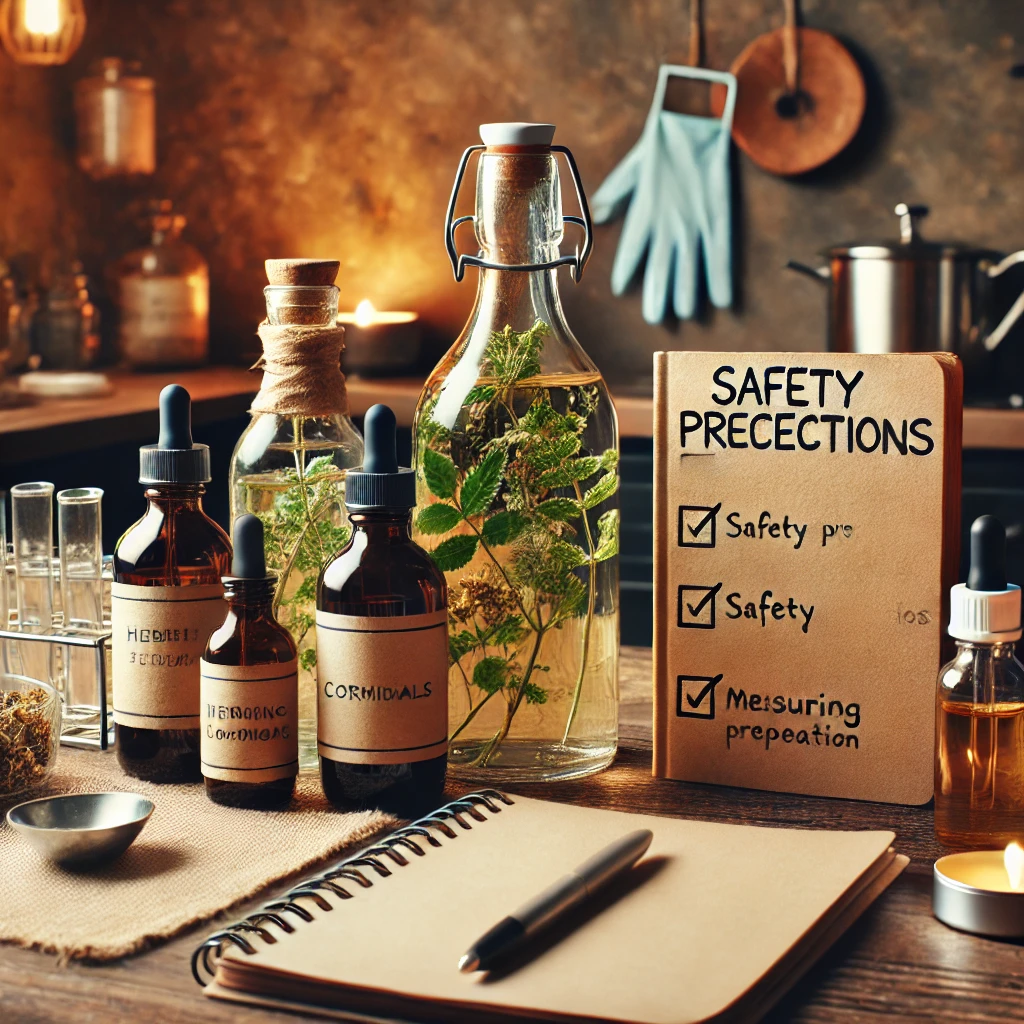
Important Safety Considerations
- Know your herbs: Research any herb before using it in cordials
- Avoid toxic lookalikes: Be 100% certain of identification when foraging
- Pregnancy and medications: Some herbs may be contraindicated during pregnancy or may interact with medications
- Alcohol awareness: Remember that alcoholic cordials contain alcohol, even when diluted
- Food allergies: Be aware of potential allergic reactions to certain herbs and flowers
- Proper sanitation: Always use clean, sterilized equipment
Disclaimer
While I’m passionate about herbal cordials, I’m not a medical professional. The information provided in this article is for educational purposes only and is not intended as medical advice. Always consult with a healthcare provider before using herbs medicinally, especially if you have existing health conditions, are pregnant or nursing, or are taking medications. Some herbs may cause allergic reactions or interact with medications.
Call to Action & Engagement
I hope this comprehensive guide inspires you to create your own herbal cordial recipes! There’s nothing quite like capturing the essence of nature in a bottle and enjoying it throughout the year.
Share Your Creations! Have you made any of these recipes? I’d love to see your results! Share a photo in the comments below or tag us on social media with #HerbalCordialMagic.
Ask Questions! Curious about a specific herb or technique? Have a troubleshooting issue? Ask in the comments, and I’ll help you solve your cordial conundrums.
Subscribe for More! Join our herbal enthusiasts’ community by signing up for our newsletter. You’ll receive exclusive recipes, seasonal herb guides, and first access to our online workshops.
What will your first herbal cordial be? I can’t wait to hear about your aromatic adventures!
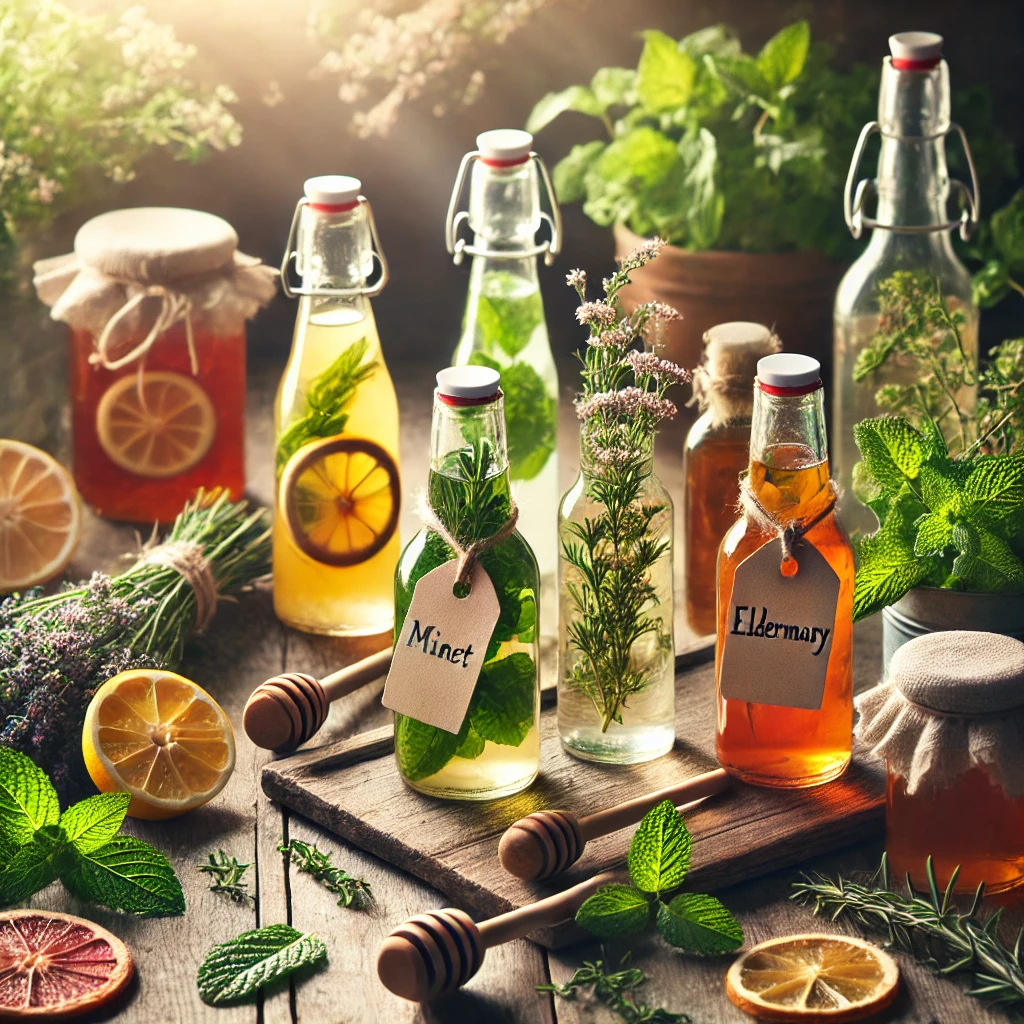
1 thought on “Herbal Cordial Recipes: The Ultimate Guide to Crafting Delicious Homemade Infusions”